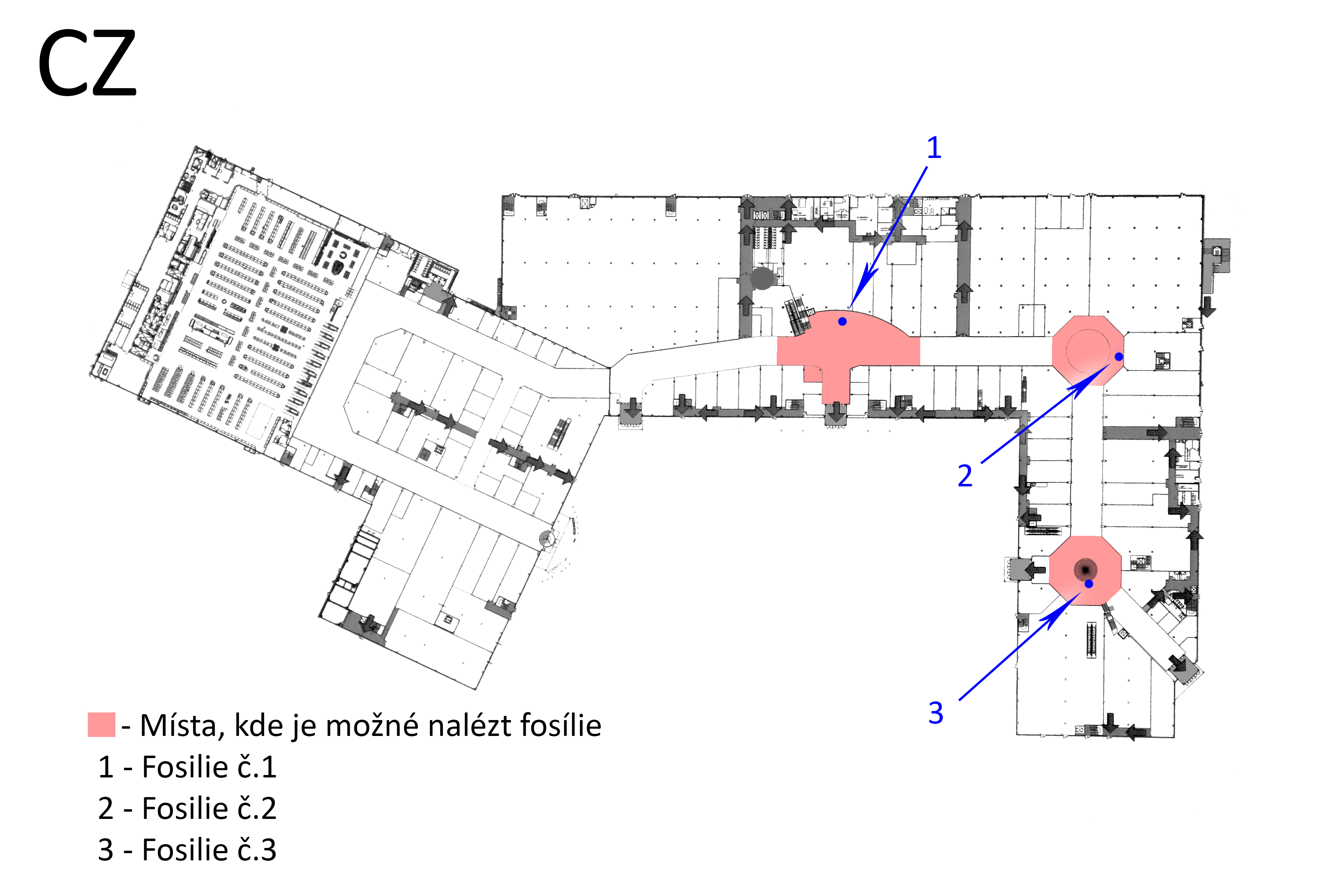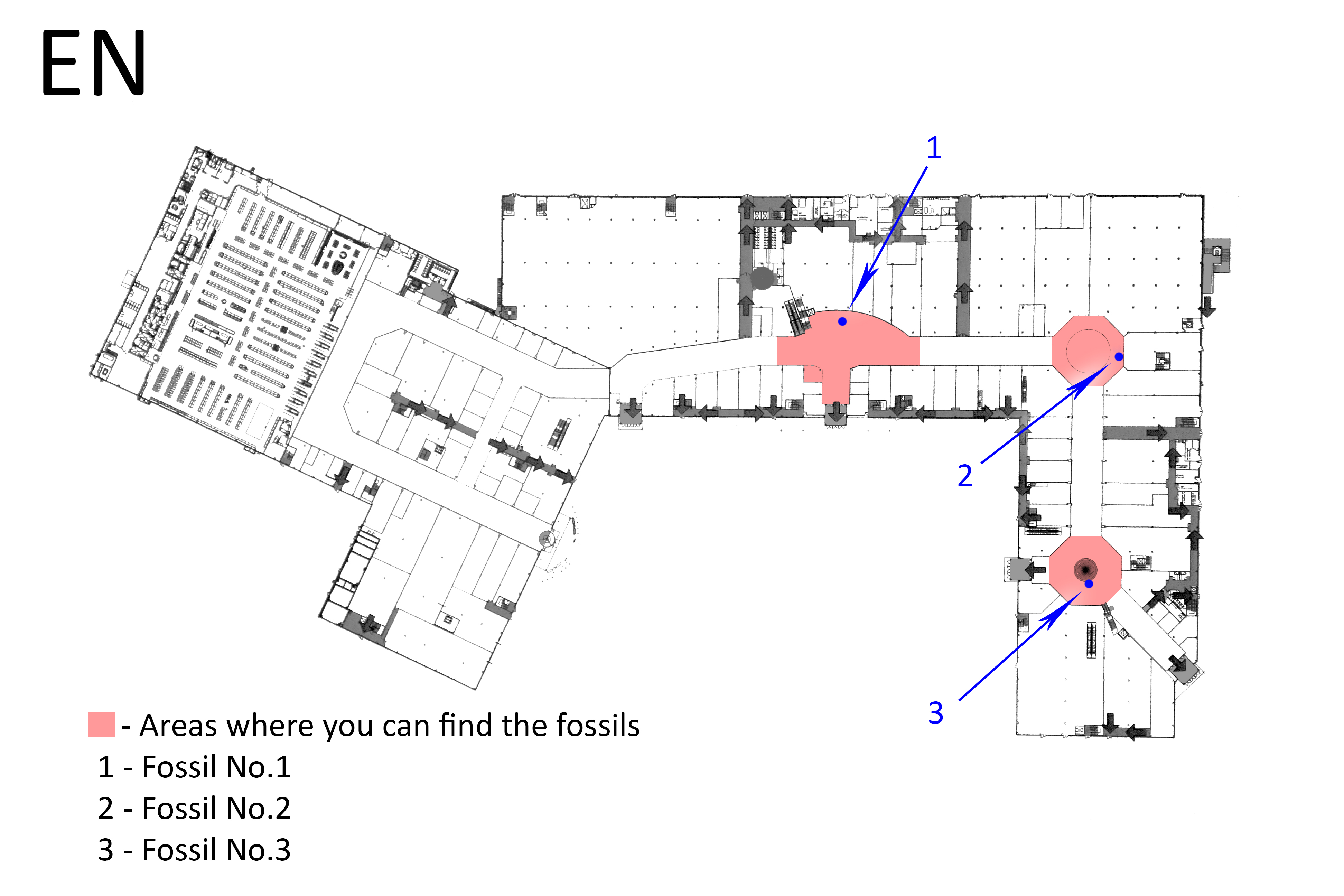CZ:
Fosilie
Fosilie jsou tvořeny mnoha různými způsoby, ale většinou vznikají, když rostlina nebo zvíře zemře ve vodním prostředí a je pohřbeno v bahně. Měkké tkáně se rychle rozkládají, takže zbydou jen tvrdé kosti či skořápky. V průběhu doby se sediment usazuje na zbytcích organismu a ztvrdne do skály. Tím brání obaleným tvrdým tkáním v rozpadu a minerály nahrazují původní organický materiál buněk v procesu zvaném "zkamenění".
Fosilie se mohou tvořit v neobvyklých situacích. Malí živočichové nebo hmyz můžou uvíznout v pasti mízy (ve smůle stromů). Časem míza ztvrdne a tvoří oranžový polodrahokam zvaný jantar. V některých kouscích jantaru jsou pak pohřbeny pozůstatky dobře zachovalých organismů.
Sopečné erupce mohou také napomáhat vzniku zkamenělin. Zvířata totiž často mohou uváznout v tocích horkého popela či bahna. V tomto případě vzniká fosilní otvor ve tvaru fosilizovaného zvířete – včetně měkkých tkání často i včetně textury kůže daného živočicha.
Zdaleka nejčastější fosilní pozůstatky jsou ale ze skořápek mořských bezobratlých živočichů, jakými jsou šneci či škeble. Tyto pozůstatky tvoří většinu z fosilního dědictví, které dnes máme.
Rostliny mohou také zanechat fosilie. Není to ovšem tak časté jako u živočichů. Jednotlivé rostlinné struktury totiž obvykle nepřežijí, protože rostlinné materiály jsou komprimovány na méně než jednu setinu jejich původní velikosti. Velkou část fosilního dědictví rostlin tedy máme ve skutečnosti v podobě uhlí, což je fosilní dědictví celých generací lesů.
http://www.cackon.net/sbirka/

Zalogování keše:
Vaším cílem je hledat fosilie (nebo-li zkameněliny) v kameni, ze kterého je udělána podlaha pasáže. Pro potřeby zalogování této keše musíte splnit tyto úkoly:
1) Identifikujte živočicha, jehož fosilie zde v podlaze můžete najít. Zjistěte jeho jméno. (Asi na to budete muset použít trochu googlení.)
2) Určete geometrický tvar/obrazec, který je pro fosilie tohoto živočicha typický. Nejlépe je to vidět na fosilii č.1.
3) Navštivte tři fosilie, které jsou větší a výraznější, než ostatní (vyznačené na mapě - č.1, č.2 a č.3). Určete, která je z nich největší, a určete či zkuste definovat rozdíly mezi těmito třemi fosiliemi.
4) Své odpovědi mi zasílejte přes profil na můj e-mail.
Logy se špatnou nebo žádnou odpovědí budou smazány.
Prosím, nedávejte fotografie fosilií do svých logů! Fotografie vás s vaším geozařízením někde v okolí jsou samozřejmě vítané, ale pozor, že v obchodním centru se „oficiálně“ nesmí fotit. :-)
EN:
Fossils
The fossils are formed in many different ways. Usually are formed when a plant or animal dies in the aquatic environment and is buried in the mud. Soft tissues decompose quickly, so only thinks left are the hard bones or shells. Over time, the sediment settles on the remains of the body and hardens into rock. This prevents enveloped hard tissue in disintegration. At final the minerals replace the original organic material of cells in a process called "fossilization ".
Fossils can be created in unusual situations. Small animals or insects can get stuck in the trap of tree sap. Eventually sap hardens and forms to the orange semiprecious called amber. In some pieces of amber are then buried the remains of a well -preserved organisms.
Volcanic eruptions can also help in formation of fossils. Animals can often get caught in the flow of hot ash or mud. In this case there is a fossil hole in the shape of animal - including parts of soft tissues, often including skin texture of the animal.
By far the most common fossil remains are but shells of marine invertebrates such as snails and clams. These remains make up most of the fossil heritage that we have today.
Plants can also leave fossils. But it's not as common as in animal’s case. Individual plant structure usually does not survive because the plant material is compressed to less than one hundredth of its original size. A large part of the fossil heritage plants are we actually in the form of coal, a fossil heritage of generations of forests.
http://www.discoveringfossils.co.uk/whatisafossil.htm

To log this cache:
You are looking for a fossils buried in the paving stone. In order to claim the cache as found you need to:
1) Identify the creature that has been fossilised. You are looking for English name of this creature. (You will probably need to google it.)
2) Determine geometric shape that is characteristic for fossils of this animal. The shape is best seen in the fossil No.1.
3) Visit tree fossils which are bigger and mode special than the orhers (shown on the map - No.1, No.2 and No.3). Determine which is the largest of them, and try to specify or define the differences between these three fossils.
4) Your answers send me via my profile e-mail.
Logs with no answers or wrong answers will be deleted.
Please don't publish photos of the fossils itself with your log entry. Photos of you in the surrounding area are fine. :-)